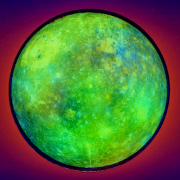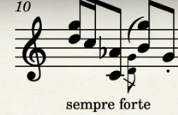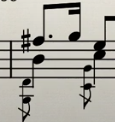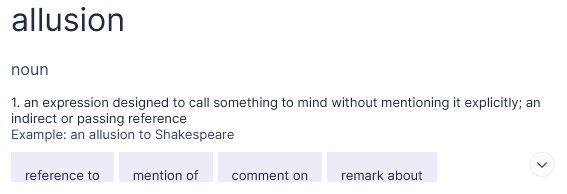All Activity
- Past hour
-
guy500 started following First Counterpoint Attempt (plus score feedback)
-
This is my first attempt at sustained 4-part counterpoint. How did I do? Audio – https://soundcloud.com/guy-shahar/track-16-vocal-quartet-satb?in=guy-shahar/sets/new-compositions-2024&si=d2d57780dc6f4ae7a75b7ea8a5dbdbe3&utm_source=clipboard&utm_medium=text&utm_campaign=social_sharing Score – https://heartfulhealing.co.uk/wp-content/uploads/2025/04/Track-16-Score.pdf I don’t usually ask for feedback on the score, as I barely read music and tend to just rely on the one Cubase generates. It’s way out of my comfort zone, but I think it’s probably time for me to get the hang of the basics of scoring, so I’ve got Dorico and have been trying (hard) to get it to help me. How does this one read? What adjustments should I bear in mind for scoring my next piece?
- Today
-
FILMSCORE changed their profile photo
-
Henry Ng Tsz Kiu started following Zwei Wandrers Nachtlieder
-
ComposaBoi started following The boreal forest
-
mercurypickles started following Zwei Wandrers Nachtlieder
-
Here are two songs for voice I wrote back in February. These are pieces I wrote shortly after a break to composition, I was too busy to write anything for most of last semester. They are a setting of Goethe's two "Wandreres Nachtlied" poems, famously set by Schubert and Liszt among others. I wrote this pair of songs on/around Valentine's Day, I had a lot on my mind and these were the output of that. I'll be performing them myself relatively soon, as will a friend of mine, and I will post a real recording soon. In the mean time, enjoy the MIDI 😝 Let me know your thoughts!
-
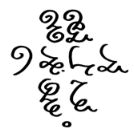
Dodecaphonic Perpetual Canon for String Quartet.
Fugax Contrapunctus posted a topic in Chamber Music
This canon is based on each of the four contrapuntal transformations of a single dodecaphonic series, initially highlighted in colours corresponding to each of the 12 notes of the tone row. As showcased in the video, said transformations are presented and organized within the melodic line as follows: Original Tone Row - Retrograde - Inverted - Inverted Retrograde. Even though as a perpetual canon it could technically go on forever and always end up in the same pitch, only two complete repetitions of the whole line are shown here: first the one with highlights and labels for each of the transformations amidst the contrapuntal scaffolding, and lastly the one without either. A more tonal-sounding plagal-ish cadence has also been included as a small coda at the end, once the cello completely finishes playing the bass line's 2nd repetition. Enjoy! YouTube video link: - Yesterday
-
Hi all, Here's a work that laid unfinished for 17 years. Came across it again on the computer and decided to finish the work. It's a set of vignettes (moods) through out a day: Morning Rush 7 AM, Afternoon Dreams 3 PM, Dinner Alone 5 PM, Out the Door 7 PM, Falling Asleep 11 PM ..... and ? Falling asleep are variations of a lullaby I composed for my daughter 47 years ago. Hope you enjoy the work. Mark
-

Performing this piece at my university concert
Mooravioli replied to Mooravioli's topic in Piano Music, Solo Keyboard
Update: Live Performance + Score of this piece: -
PavleGavrilovic changed their profile photo
-
Hello everyone, My name is Pavle Gavrilović. I’m a composer, songwriter, and multi-instrumentalist from Belgrade, Serbia. After years of dedication, I was honored to be admitted to the Doctor of Musical Arts (DMA) program in Composition at the Jacobs School of Music at Indiana University - one of the top music schools in the U.S. This is a once-in-a-lifetime opportunity for me to grow as a composer, artist, and educator. However, as an international student, despite receiving a merit-based scholarship, I still need financial support to cover the high cost of tuition. Sadly, I am not eligible for federal loans or government financial aid. Coming from Serbia, where the average monthly salary is under $1000, this challenge is too big for me and my family to overcome alone. I am trying everything possible - external scholarships, jobs, and now crowdfunding. If you are able to support me, or even just share my campaign, it would truly mean a lot. Every contribution, no matter the size, brings me closer to realizing this dream. Here’s the link to my GoFundMe: https://gofund.me/a1ab789c You can hear my music on - Thank you for reading, Best, Pavle
-
PavleGavrilovic joined the community
-
Here is a revised version of the piece (played with the Flat app). Once again, any and all feedback is appreciated Nocturne Ab (second draft).mid Edit: if this link doesn’t work try the screen recording link Nocturne Ab (second draft).mid
-
Ah ha! That would explain it!
-
A project that was rejected and never saw the light of day.
-
- wrriten arranged & produced by filmscore
- jazz bigband
- (and 1 more)
-
Thanks very much, Pate. Yes, I'm pretty sure that's where I went wrong - I didn't realise that their part was meant to be read an octave lower, so it all makes more sense now. They were actually singing an octave lower than I'd though.
-
I think this insight offers an opportunity for a discussion on how academically trained composers approach/think about composing; and how others who compose with less of an academic training/background approach their projects. Mark
-
Thanks for the shout out, Henry. I actually record all the parts myself instead of using samples, which may be the difference. As an alto, I generally have the range to also record soprano and tenor parts. The lowest bass parts are too low for me, so I sing them up a few steps and use Garageband's "transpose" feature to shift them back down to where they are supposed to be. It sounds like I've been dropped down a well, but it works well enough.
-
Hi, guy, I suspect the problem is that an octave above middle C really is quite high for most tenors. Counter tenors can sing that, or higher, but they are an exceedingly rare voice type. The samples you bought may be giving you a more realistic idea of what you would get from a group of vocalists than your composition software. It's not that men who can sing that high don't exist. That is technically a range some tenors can sing in, but only a tiny number. Take a look at some standard choral repertoire and you can start to get an idea of the more commonly used parts of the range for different voice types. And remember that it is only in modern times that we have started using the "modern" tuning. Historic pieces look like they are written higher than they actually were, because the composers and singers were using a different tuning standard when they were written, and they are still performed down at that historically accurate tuning today.
-
I wrote this piece ten years ago, but have just made a new multitrack recording of the parts, so I thought I would share it here. Yes, you are correct. The bass line is being sung by an alto dropped down a well. (GarageBand makes it possible for me to sing all the parts, but I have to use the transpose feature to record the lowest bass notes, which creates a little distortion to the sound quality). The sheep is a genius of place; why would she stray? Here is the homeland. Here, her mother's house. Feed my sheep. Lead them home. Let them rest. Sisters, all among the hills, chanting their Daily Office: "There the rain licks into little pools. There, a dip to hide new lambs." "Take my coat," she said. "You are a guest."
- Last week
-
Who doesn't Recognize this " 7 Second Signature Intro " ?
-
The way that musehub works best is if you have it set to launch upon startup. it has little to no impact 🙂 Also, the Musehub login is different from the Musescore.com / .org logins I found a solution to it. I'm going to make a second post with an updated video to resolve some balancing/sound issues, and to showcase the reason why that was happening. To give you a summary, apparently I have to apply a soundflag to each part, and set it to "Classic Phrasing" to fix that... Who knew... lol
-
Let me try something new. I believe the audio issues that you all are hearing with my uploads are stemming from my use of Dolby Atmos, external speakers, and equalized headphones. I don't have a Raw Audio output to proof listen-to after writing music. The Musescore mixer is also notoriously under-monitoring for gain and overload, as in muse mixer, it didn't indicate this at all. It indicated French Horn was much lower than Trumpet, among other inconsistencies
-

🌎 World-International Music
FILMSCORE replied to FILMSCORE's topic in Incidental Music and Soundtracks
Concluding part of "World-International Music" 🇺🇸 America,🇬🇧 United Kingdom,🇪🇸 Spain, 🇦🇹 Austria,🇩🇪 Germany,🇮🇪 Ireland- 1 reply
-
- flavours
- world-international music
- (and 6 more)
-
there’s more where this came from
-
Hi again @Dima Kravets! I agree with what @luderart has said above about the difficulty of some of the double and triple stops. Including consecutive double stops that can be really difficult as well! Such as these: and these: In the first image the D and G have to be played on the G and D strings respectively and right after using those two strings for the C and Ab. In the 2nd image the G and D open bottom strings are played before moving to a parallel fifth on the A and E strings playing a B and F# which have to be barred at the same location on the finger board which can be difficult. I also agree that a real performer could definitely breathe more life into the composition with their interpretation. But it's a thousand times easier to make a musical interpretation if it is clear to the performer that the composer already has an idea of how the piece can be expressed in a musical way. This is especially important for pieces that are for a solo instrument because the soloist is tasked with keeping the momentum and musicality of the work all on their own which is much more intensive than collaborating with another performer. The soloist is asked to "make something out of the work" that in many cases has never been performed before. So having a good idea of what you want as the composer can really help the performer out and facilitate a future performance. And making a good rendition with lots of tempo changes and musical indications as to how the piece should sound even in electronic form is important as well (perhaps as a selling point to get a performer convinced to perform it). I see from your profile that you specialize in chamber music so you probably already have a good idea about that. But when you say things like: it makes me think that you don't see the point or value of making a realistic rendition, which is a shame. Needless to say, the piece sounds very mechanical throughout and could stand from some humanization and TLC to improve it. But it's better to already be thinking of those things as you're composing it rather than having to go back and revise a piece that wasn't conceived musically to begin with. That's just my own perception of the piece however. I look forward to hearing more of your contributions to the forum (as well as potentially your opinion about other composers' works on the website!) Thanks for sharing. P.S. I'm sure the reviewers of your work (including myself) would appreciate a ❤️ or a 🏆 reaction/acknowledgment of their time and effort that they took to listen and formulate a response. It would really help our little musical community flourish! Thanks in advance!
- 2 replies
-
- 1
-

-
- classic
- tiny pieces
-
(and 3 more)
Tagged with:
-

🟫 𝑺𝒚𝒎𝒑𝒉𝒐𝒏𝒊𝒄 𝑶𝒓𝒄𝒉𝒆𝒔𝒕𝒓𝒂𝒕𝒊𝒐𝒏
FILMSCORE replied to FILMSCORE's topic in Incidental Music and Soundtracks
Thankyou 4 your Indepth-Review, i was shocked to see it. Thankyou............ The Harp plays only Once, at the Start of the Track with the Timpani, Primarily to initiate the "SIGNATURE" Thankyou..........The software can take "BOTH-BARRELS" ...... he he , quick harp glissandi is possible, and there used in other productions already posted. Thankyou..........All Production-Trax posted ,are using a "RICOCHET" Reverb, and there is a problem with it, as this software is a Classified-Alpha/Beta version. ---------------------- I had to Look up 2 words that you used, as iv never heard them B4.............. But now i know , & Thanx again 4 your Detailed Review. -
Henry Ng's Moment Musical No. 2, arranged for organ
PCC replied to PCC's topic in Piano Music, Solo Keyboard
It's a limitation of how I use MS probably. irl I would couple the manuals to the pedalboard so the bass would sound more prominent irl -
.thumb.png.8b5b433a341551e913a34392660bc95b.png)
'Poème': a 30-second hommage to Scriabin
PeterthePapercomPoser replied to 林家興's topic in Piano Music, Solo Keyboard
Hello @林家興! Nice job! This reminds me of @Thatguy v2.0's Prelude No.11! In that piece, he tried to marry the concept of the Mystic Chord with the Acoustic scale. Not surprising that it seems similar to this piece given that they're both influenced by Scriabin. They both have a sense of being a kind of unanswered question or have a mysterious unfinished-ness about them. It would be great to hear this performed live! Perhaps, if you don't perform it yourself, you could ask @Henry Ng Tsz Kiu to perform it for you? Thanks for sharing!

